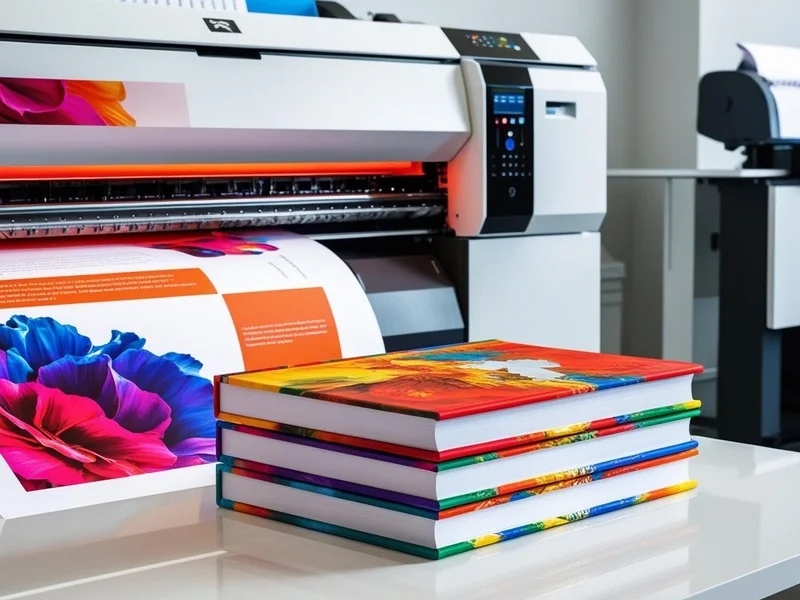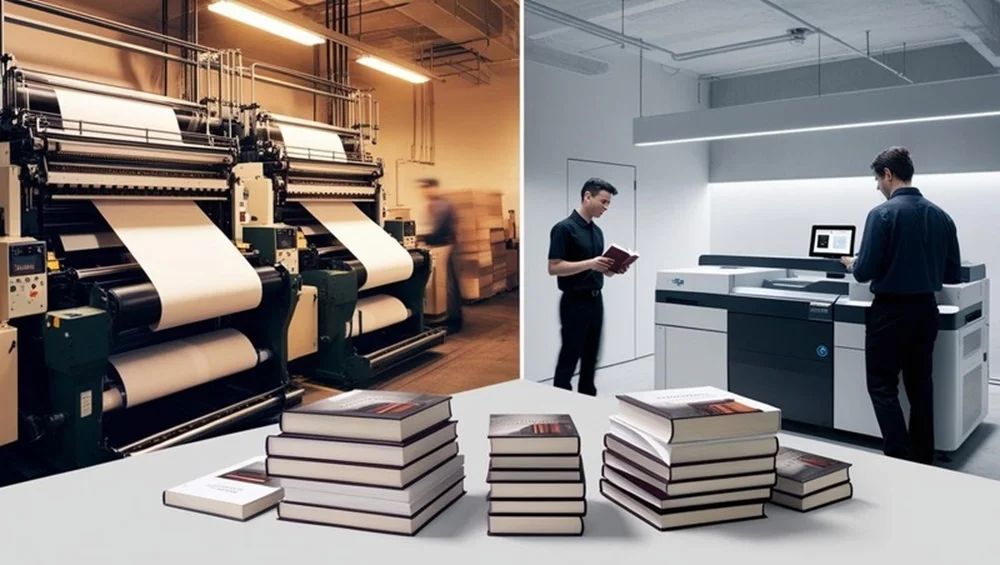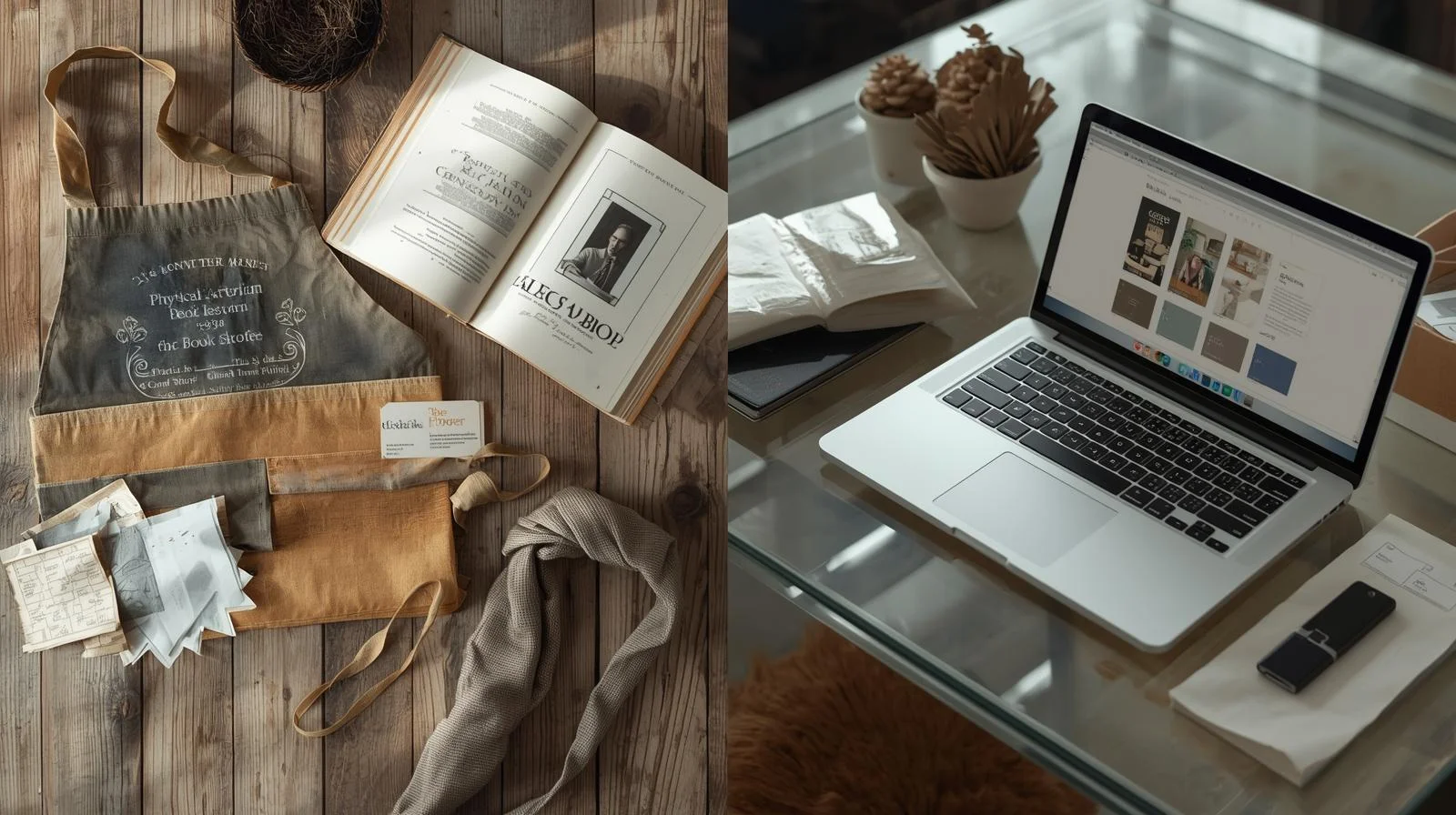Choosing the right book printing method can feel overwhelming. Should you go with offset printing or digital printing? Each has its strengths and weaknesses. This guide breaks it down clearly to help you decide. We’ll compare offset and digital printing, explain when to use each, and answer common questions. By the end, you’ll know which method suits your book best.
Table of Contents
ToggleWhat Is Book Printing?
Book printing turns your manuscript into a physical book. It involves choosing a printing method, paper type, binding style, and more. The two main methods are offset printing and digital book printing. Your choice depends on your budget, book type, and how many copies you need.
- Offset printing: Uses metal plates to transfer ink onto paper. Best for large print runs.
- Digital printing: Prints directly from a digital file. Ideal for small batches or on-demand printing.
Let’s dive into each method to see how they work.

Offset Printing: The Traditional Choice
Offset printing has been around for decades. It uses metal plates to apply ink to paper through a series of rollers. This method is known for high quality and consistency.
How Offset Printing Works
- A digital file is turned into metal plates—one for each color (cyan, magenta, yellow, black).
- Ink transfers from the plates to a rubber blanket, then to paper.
- Pages are printed in large sheets, folded, and bound into books.
Benefits of Offset Printing
- High quality: Sharp text and vibrant colors, especially for photos or art books.
- Cost-effective for large runs: The more you print, the cheaper each book costs.
- Flexible options: Choose custom paper, sizes, or special inks like Pantone colors.
- Consistent results: Every copy looks the same.
Drawbacks of Offset Printing
- High setup costs: Plates and press setup make small runs expensive.
- Longer turnaround: Takes time to prepare and print.
- Less flexible: Changes after setup are costly.
Best for: Novels, textbooks, or coffee table books with 1,000+ copies.
Internal link suggestion: Link to a page about “How to Choose Paper for Your Book” for more details on paper options.
Digital Printing: The Modern Option
Digital book printing is newer and more flexible. It prints directly from a digital file, like a PDF, using laser or inkjet technology. It’s perfect for small runs or print-on-demand (POD) books.
How Digital Printing Works
- You send a digital file to the printer.
- The printer uses toner or ink to print pages directly onto paper.
- Pages are cut, bound, and shipped quickly.
Benefits of Digital Printing
- Affordable for small runs: No costly setup, so 20–500 copies are budget-friendly.
- Fast turnaround: Books can be printed in days, not weeks.
- Flexible updates: Easy to revise your book without extra costs.
- Eco-friendly: Less waste since you print only what you need.
Drawbacks of Digital Printing
- Higher per-book cost: More expensive per copy for large runs.
- Limited options: Fewer paper types and sizes compared to offset.
- Slight quality variation: Colors may shift slightly between prints.
Best for: Self-published books, short-run memoirs, or advance review copies.

Offset vs Digital: Key Factors to Consider
Not sure which method to pick? Here are the main factors to weigh:
- Quantity:
- Offset: Best for 1,000+ copies. Costs drop as quantity rises.
- Digital: Ideal for 20–500 copies. Great for testing the market.
- Budget:
- Offset: Higher upfront costs but cheaper per book for big runs.
- Digital: Lower upfront costs but higher per-book costs.
- Quality Needs:
- Offset: Superior for high-resolution images or special finishes.
- Digital: Good for text-heavy books or standard visuals.
- Timeline:
- Offset: Takes 2–4 weeks due to setup.
- Digital: Ready in 3–7 days, perfect for tight deadlines.
- Customization:
- Offset: More options for paper, binding, and inks.
- Digital: Limited to standard sizes and papers.
Pro tip: If you’re unsure about sales, start with digital book printing for a small batch. You can switch to offset later if demand grows.
External link suggestion: Link to a trusted book printing company’s blog (e.g., IngramSpark) for tips on preparing files for printing.
Common Questions About Book Printing
Here are answers to questions authors often ask, inspired by Google’s “People Also Ask”:
1. What’s the cheapest way to print a book?
Digital book printing is usually cheapest for small runs (under 500 copies). For larger runs, offset printing saves money per book.
2. Can I mix offset and digital printing?
Yes! Some authors use digital for advance copies and offset for bulk orders. This balances cost and flexibility.
3. How do I know if my book needs high-quality printing?
If your book has lots of images, like a cookbook or art book, offset printing ensures crisp details. For novels or text-heavy books, digital is often fine.
4. Is digital printing good for self-publishing?
Absolutely. Digital printing’s low upfront costs and fast turnaround make it ideal for self-published authors.
Schema suggestion: Add FAQ schema markup for these questions to boost search visibility.
Tips for Choosing the Right Printing Method
Follow these steps to make a smart choice:
- Estimate your print run: How many copies do you need now? Plan for 6–12 months of sales.
- Set a budget: Include book printing, shipping, and storage costs.
- Check your book type: Image-heavy books need offset; text-based books can use digital.
- Talk to printers: Get quotes for both methods to compare costs.
- Test the market: If you’re new to publishing, start with a small digital run.

Why Your Choice Matters
Picking the right bookprinting method affects your book’s quality, cost, and success. Offset printing shines for large, high-quality runs but requires more upfront investment. Digital printing offers speed and flexibility, perfect for small batches or new authors. Think about your goals—do you want a premium product or a quick launch? Either way, understanding both methods helps you make a confident decision.
Ready to Print Your Book?
Now you know the difference between offset and digital printing. Consider your budget, timeline, and book type. Need help? Contact a trusted printer for advice or quotes. Whether you choose offset for stunning quality or digital for speed, your book is one step closer to readers’ hands.





